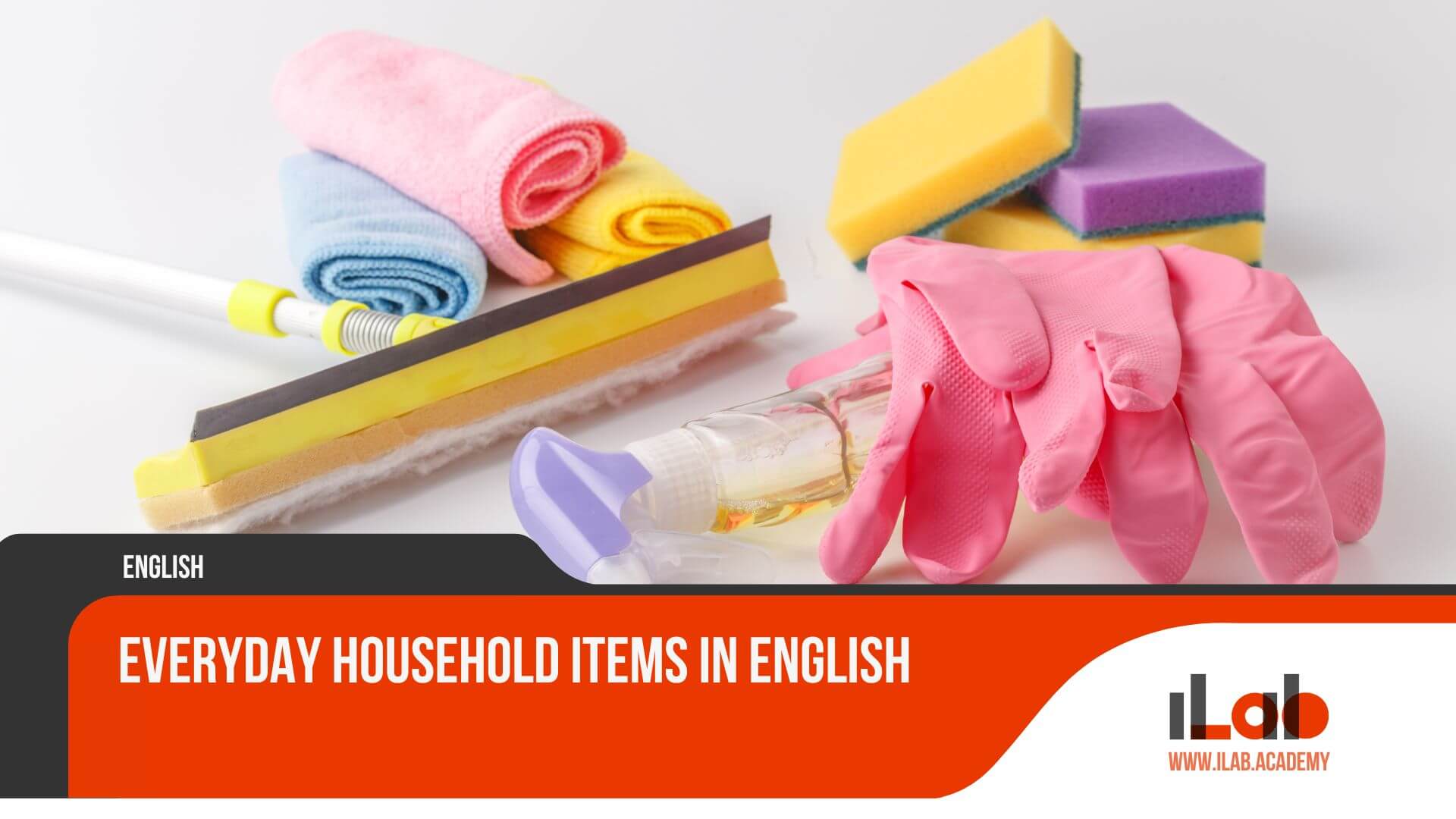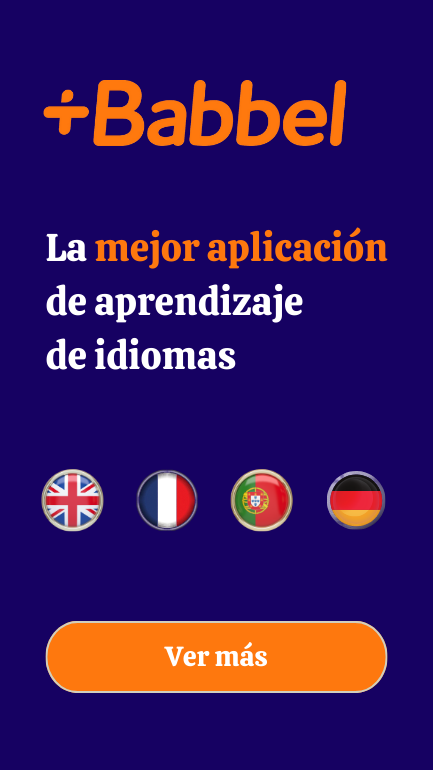Learning household vocabulary is much easier (and more fun!) when you organize it by room. Start with the basics: the fridge and stove in your kitchen, the bed and closet in your bedroom, the shower and sink in your bathroom, and the couch and TV in your living room. These are the words you’ll use every day — and the first ones you should learn.
Try labeling these items with sticky notes, and practice using them in real phrases like “wipe the table” or “fold the clothes.”
Don’t forget: British and American English sometimes use different words (like “tap” and “faucet”), so knowing both will make you sound more natural and help you understand more people.
What You’ll Learn in This Guide
Quick overview:
- ✅ Essential household vocabulary organized by room
- ✅ Practical learning techniques and tips
- ✅ British vs American English differences
- ✅ Common phrases and verb combinations
- ✅ Cultural insights and idioms
- ✅ Teaching strategies for kids
Perfect for: Beginners to intermediate English learners who want to feel more confident talking about their home and daily life.
Table of contents
Essential Household Vocabulary for Beginners
Learning English for your home is the best way to start speaking naturally.
Look around: the chair you’re sitting on, the door you walk through, the bed you sleep in—all have English names you’ll use every day.
By mastering these words, you’ll feel more confident describing your home, asking for things, and understanding others.
Why start with household words?
Because they’re everywhere! You’ll use them in daily routines, when shopping, or even just chatting with friends about your living space.
Don’t try to memorize endless lists—instead, learn words in context. For example, describe your morning:
“I get out of bed, open the closet, and go to the kitchen for a cup of coffee.”
The most essential household items for beginners:
| Room | Essential Items | Example in Conversation |
|---|---|---|
| Kitchen | refrigerator/fridge, stove/oven, sink | “I need to put groceries in the fridge.” |
| Bathroom | toilet, shower, sink, bathtub | “Excuse me, where’s the bathroom?” |
| Bedroom | bed, pillow, blanket, closet | “I’m tired. I’m going to bed.” |
Why these words matter:
They’re A1-A2 level vocabulary that appears constantly in English usage data.
Instead of memorizing isolated words, learn them in context by describing your daily routine.
Tip: Practice by describing your daily routine using these words. The more you use them, the more natural your English will sound!
How Can I Learn English Words for Things at Home?
Transform your home into an English learning laboratory!
Your living space is filled with objects you use daily—perfect for natural vocabulary building.
Try these proven techniques:
- Label everything – Stick Post-it notes on furniture, appliances, and everyday items
- Create flashcards – Make double-sided cards with images and words
- Practice spaced repetition – Review words at increasing intervals
- Use what you learn – Consciously name items as you use them
Why this works:
Physically touching items while saying their names creates stronger neural connections.
When you pick up your “coffee mug” each morning or open the “refrigerator,” you’re reinforcing vocabulary in meaningful context.
Pro tip: Start with one room per week. Label kitchen items first, then move to bathroom, bedroom, and living room. This systematic approach prevents overwhelm and builds confidence.
Vocabulary by Room and Function
Let’s organize household vocabulary by room and function—this method helps you remember words better by connecting them to specific spaces.
You’ll learn everything from kitchen essentials (spatulas, cutting boards) to bathroom items, living room furniture, and cleaning tools for household chores.
Why organize by room?
Because your brain naturally groups related items together. When you think “kitchen,” words like “fridge,” “stove,” and “sink” come to mind automatically.
This approach makes vocabulary building feel more natural and less overwhelming.
Pro tip: Knowing the difference between a “mop” and a “broom” can save you from awkward conversations when asking for cleaning supplies!
Kitchen Essentials in English
The kitchen is the heart of most homes, filled with specialized tools that can be confusing to name in English.
Essential kitchen vocabulary:
| Basic Utensils | Major Appliances |
|---|---|
| Spatula/Turner | Refrigerator (or “fridge”) |
| Whisk | Microwave oven |
| Cutting board | Stove/Range/Cooktop |
| Measuring cups | Dishwasher |
Regional differences to know:
Americans say “frying pan” while Brits prefer “skillet.”
Don’t confuse a kettle (for boiling water) with a teapot (for brewing tea).
The sink area includes both the basin and the faucet (or “tap” in British English).
Pro tip: Start with the appliances you use daily—fridge, stove, microwave. Then add utensils as you cook more.
Common Bathroom Objects and Their Names
Every bathroom contains dozens of specialized items you’ll need to name when shopping, traveling, or discussing household matters in English.
Fixed fixtures:
Sink (or basin) for washing hands, toilet for waste, mirror for checking appearance, shower and/or bathtub for cleaning.
Personal hygiene items:
Toothbrush with toothpaste for dental care, soap for washing, towels (hand towel, bath towel) for drying.
Regional differences:
Americans say “washcloth,” Brits say “flannel.”
Americans say “bathroom,” Brits often say “loo” or “toilet.”
Pro tip: Start with the fixtures (sink, toilet, shower) since you’ll need these words most often when traveling or staying with English speakers.
Living Room and Bedroom Vocabulary
Let’s explore where you’ll spend most of your waking and sleeping hours.
Living room essentials:
Sofa (or couch) for comfortable seating, remote control for TV/entertainment, curtains for privacy and light control.
Bedroom basics:
Bed is the focal point (Americans spend about a third of their lives here!), pillow for your head (not to be confused with cushions for sofas), bedside lamp for softer lighting.
Pro tip: These rooms are where you’ll have most conversations about daily life, so knowing these words helps you feel more at home in English-speaking environments.
Cleaning Tools and Chores: Key Terms You Should Know
Keeping your home clean requires knowing both the right tools and the vocabulary to discuss household chores in English. Let me walk you through the essentials.
The most common cleaning tools each pair with specific actions:
- A broom is what you use to sweep floors
- A mop helps you mop tile or hardwood surfaces
- A vacuum cleaner (or simply “vacuum”) is used for vacuuming carpets
- Scrub brushes are for when you need to scrub stubborn dirt
When talking about your cleaning routine, you’ll sound more natural saying “I need to vacuum the living room” rather than “I need to clean with the vacuum.” Matching the right verb to each tool shows you’ve mastered these everyday expressions.
Furniture, Storage, and Appliances
I’ve often found that students struggle with the terminology for larger items in our homes, especially when trying to distinguish between different types of storage units.
What you’ll learn in this section:
- How to talk about furniture and home devices in everyday English
- The tricky distinctions between closets, wardrobes, and cabinets
- Why native speakers sometimes use these terms differently
Talking About Furniture and Home Devices in English
Everyone needs to distinguish between the various items that fill our homes, whether they’re for sitting, storing, or simplifying daily tasks.
Common challenge: Many English learners struggle with specific terms, often using general words like “machine” or “thing” when more precise vocabulary exists.
Helpful breakdown of common household items:
| Item Type | Examples | Function |
|---|---|---|
| Seating | Couch/sofa, armchair, stool | For sitting and relaxing |
| Tables | Coffee table, dining table, desk | Horizontal surfaces for activities |
| Storage | Bookshelf, cabinet, wardrobe | Keeping belongings organized |
| Appliances | Refrigerator, washing machine, microwave | Electric devices that perform tasks |
Closet, Wardrobe, Cabinet: What’s the Difference?
Confusion often surrounds these three storage terms, especially if you’re learning English across different regions.
Key distinctions:
- Closet – Primarily American English for a recessed space built into a wall for storing clothes and other items. In the US, you’ll “look in your closet” for your jacket or hang clothes in a “walk-in closet.”
- Wardrobe – The British English equivalent to closet, but also refers to a freestanding piece of furniture for clothing storage. If you’re in the UK and need to hang your coat, you’ll use the wardrobe.
- Cabinet – Smaller enclosed storage furniture with doors and sometimes drawers, typically for dishes, food, or specific items like a “medicine cabinet” or “file cabinet.”
Deepening Your Understanding of Household English
Ready to go beyond the basics? Let’s explore the fascinating world of household English that even advanced learners sometimes struggle with.
You’ll discover:
- Why a British “wardrobe” might be an American “closet”
- How asking for a “napkin” might raise eyebrows in certain contexts
- Why common expressions like “under the weather” connect to our home environments
Let’s explore these nuances, cultural differences, and practical language combinations that will truly elevate your everyday English.
British vs American Vocabulary: Key Differences
Anyone learning English quickly discovers a surprising reality: what you call everyday objects depends enormously on which English-speaking country you’re in. I’ve seen countless confused faces when Americans and Brits try to discuss household items using their regional terms.
Three everyday household items with dramatically different names:
- Bathroom fixtures: What Brits call a “tap” is a “faucet” in America, and a “toilet” might be a “bathroom” or “restroom” in the US.
- Waste disposal: Your “bin” in the UK becomes a “trash can” or “garbage can” in America.
- Living spaces: A British “flat” is an American “apartment,” while the “ground floor” in Britain is the “first floor” in the US.
Commonly Confused Household Words in English
Beyond regional variations, English household vocabulary presents another challenge when seemingly similar words actually refer to different items.
Rug vs. Carpet
- Rug: A smaller, movable floor covering that doesn’t extend wall-to-wall
- Carpet: Fixed floor covering that typically covers an entire room
Cooker vs. Stove
- Cooker: The British term for the entire appliance used for cooking
- Stove: In American English, refers to just the cooking surface with burners
Pro tip: You’ll sound more natural when you can distinguish between these similar terms. I remember my confusion when my British roommate asked me to “turn off the cooker” while I was searching for something called a “stove”!
Untranslatable or Culturally Specific Home Items
Every culture has developed unique household solutions that sometimes defy straightforward translation. When I encounter these items while teaching English, I’ve noticed they often cause confusion for my students.
Three culturally specific items you might encounter:
- Garbage disposal – This American kitchen device sits under the sink and grinds food waste before washing it down the drain—something that puzzles many international visitors.
- Futon – While Western futons are sofa-beds, traditional Japanese futons are thin mattresses placed directly on the floor and stored away during the day.
- Kotatsu – A uniquely Japanese low table with a heater underneath and a blanket that traps the warmth—perfect for winter gatherings but virtually unknown in Western homes.
Why this matters: Understanding these cultural differences will enrich your English vocabulary beyond textbook learning.
Idioms and Expressions Related to the Home
Language creates the foundation for how we express ourselves, and nowhere is this more evident than in the rich collection of home-related idioms English speakers use daily.
Common home-related idioms:
• “Home sweet home” – expressing comfort and happiness about one’s residence • “Sweep it under the rug” – hiding problems rather than addressing them • “A roof over your head” – having basic shelter and housing
Pro tip: When you incorporate these phrases naturally, you’ll sound more like a native speaker. I’ve found that practicing idioms in relevant contexts helps cement them in your memory. Try using one in your next English conversation—perhaps mention how good it feels to return to your “home sweet home” after a long day!
Practical Verbs That Go with Household Items
Mastering household vocabulary involves more than just knowing the names of items—you’ll need to pair them with the right verbs to sound natural in everyday speech.
Three essential verb-noun combinations that’ll instantly elevate your household English:
- Clean/wipe/dust the surfaces – We wipe tables, dust shelves, and clean countertops (not “pass a cloth on the table”)
- Fold/hang the laundry – Never “bend clothes” when you mean fold them, or “put clothes on rope” instead of hanging them
- Plug in/unplug appliances – Say “I need to unplug the toaster,” not “disconnect the electricity from toaster”
Why this matters: These natural collocations will make your English sound more authentic in daily conversations.
Smart Learning Tips for Everyday Practice
Let’s explore smart techniques that’ll make household vocabulary stick in your everyday English.
How to Teach Kids Household Vocabulary in English
Five simple strategies can transform your home into a language-learning playground for children. Kids absorb language differently than adults—they learn best through play, routine, and hands-on experience rather than memorization.
I’ve found these approaches particularly effective:
- Name it while you use it – Narrate your actions during daily routines: “I’m opening the refrigerator” or “Let’s put your toys in the basket.”
- Scavenger hunts – Create simple lists with pictures of household items for kids to find and identify.
- Category games – Ask your child to point out everything in the kitchen that’s made of metal, or name all the furniture in their bedroom.
Can Labeling Items at Home Help You Learn Faster?
While many language learners focus on textbooks and apps, transforming your physical environment could actually fast-track your vocabulary acquisition.
Why labeling works:
I’ve found that placing sticky notes on household objects creates a powerful learning environment. When you label your “refrigerator,” “microwave,” or “coffee maker,” you’re combining visual memory with physical context—exactly what your brain needs to form lasting connections.
The science behind it:
You’ll encounter these labeled items multiple times daily, providing natural repetition without the drudgery of flashcards. Your brain associates the word with the actual object rather than a translation.
Pro tip: Try categorizing by room: kitchen items one week, bathroom items the next. This immersive approach turns your entire home into a vocabulary laboratory where learning happens organically throughout your day.
Useful Phrases and Verbs for Daily Household Tasks
Mastering household vocabulary becomes truly effective when you pair nouns with the right action verbs and phrases. I’ve found that learning these word combinations (called collocations) will dramatically improve your fluency when discussing home life.
Three essential verb-noun patterns you’ll need for talking about household chores:
- “Do” collocations: do the laundry, do the dishes, do the cleaning
- “Make” collocations: make the bed, make dinner, make room (for something)
- “Take” collocations: take out the trash/garbage/recycling, take care of plants
Pro tip: When you’re ready to practice, try creating simple sentences using these patterns. You’ll sound much more natural saying “I need to do the laundry” instead of awkwardly telling someone “I must wash my clothes.”
Frequently Asked Questions
How long does it take to learn household vocabulary?
Most learners can master basic household words in 2-4 weeks with daily practice. Start with one room per week and use labeling techniques for faster retention.
Should I learn British or American English household terms?
Learn both! Many English speakers mix terms, and understanding both helps you communicate with more people. Start with the version used where you live or plan to visit.
What’s the best way to practice household vocabulary?
Label items in your home, describe your daily routine in English, and practice with real conversations. Physical interaction with objects creates stronger memory connections.
How can I teach household vocabulary to children?
Use games, scavenger hunts, and daily routines. Narrate your actions (“I’m opening the refrigerator”) and make learning fun through play and repetition.
What are the most important household words to learn first?
Start with: fridge, stove, sink, bed, closet, toilet, shower, couch, TV. These appear most frequently in daily conversations and are essential for basic communication.
Conclusion
I’ve been in your shoes, stumbling through conversations about “that thing” in my kitchen. Now you’re equipped with the precise vocabulary for everyday items in your home. Keep practicing by labeling objects, shopping with your new word list, or describing rooms to friends. Remember, mastering household English isn’t just about words—it’s about feeling truly at home in your language.
Additional Resources
For more practice and learning:
- Cambridge Dictionary – Excellent resource for British and American English definitions
- Merriam-Webster – Comprehensive American English dictionary with pronunciation guides
- BBC Learning English – Free lessons and vocabulary practice for all levels
Keep learning: Remember that language learning is a journey. Start with these household basics, then gradually expand your vocabulary as you become more comfortable with everyday conversations.














